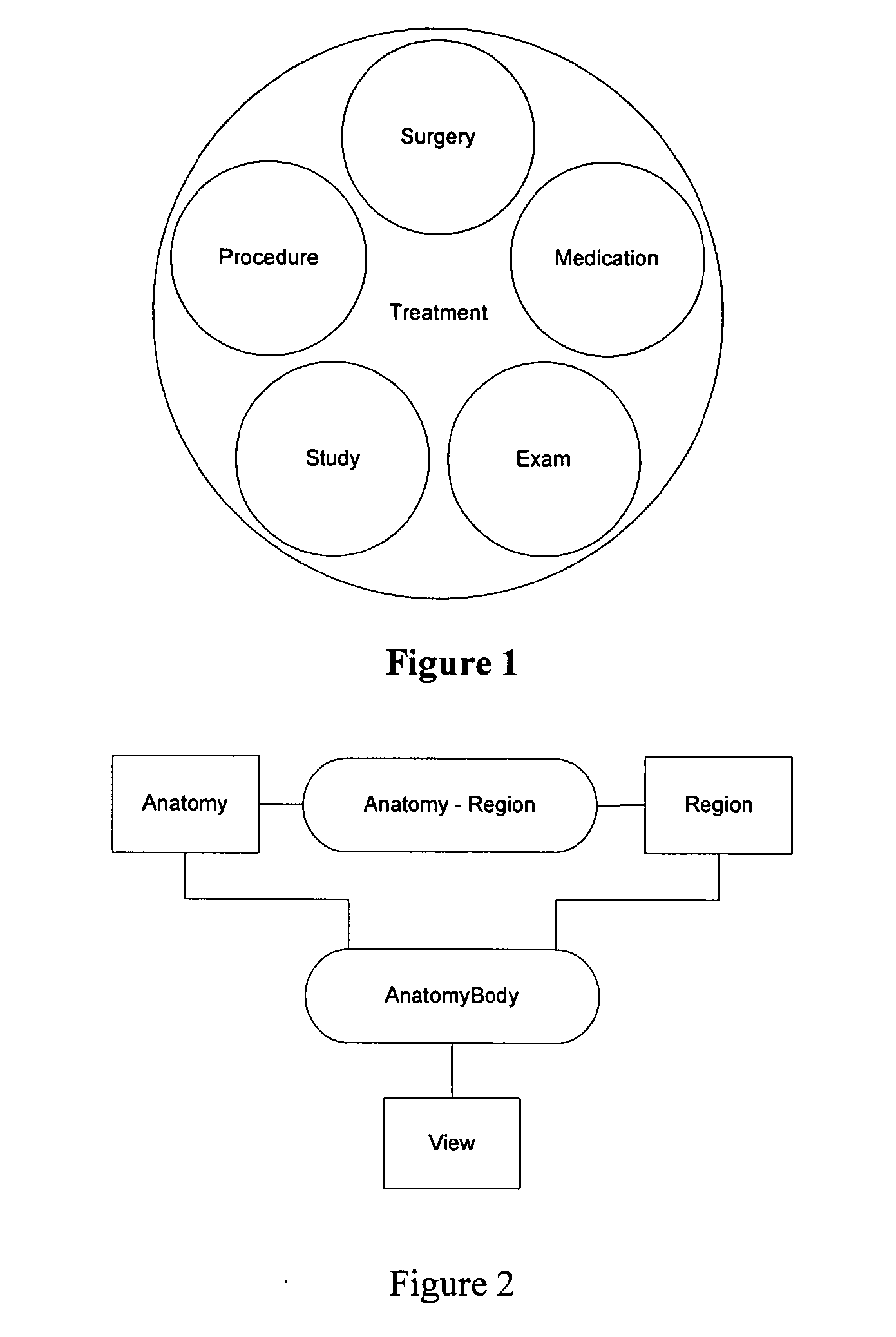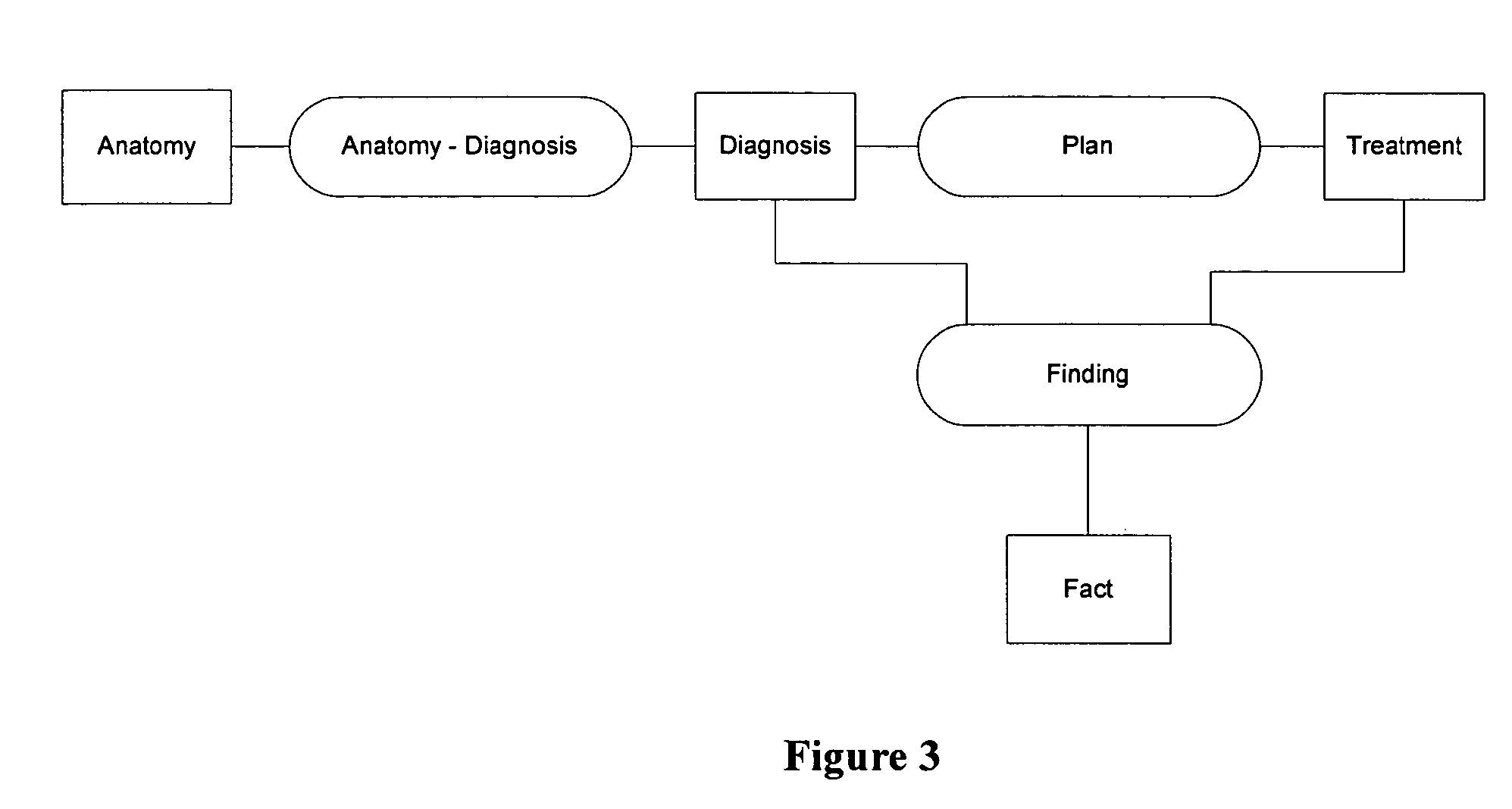The increasing demands placed on a physician's time, however, results, too often,
in patient charts and records that are improperly maintained and difficult, at best, to read.
These paper records have numerous obvious limitations and drawbacks, including a lack of legibility and inconsistency of format.
Notes are often illegible, paper suffers from wear and can only be in use at one location at a time, thus making it unavailable to more than one practitioner at a time.
Further, paper records require large secured (HIPPA) storage spaces as well as numerous shelves or cabinets.
Loss, damage, or destruction of the records can occur due to numerous mishaps such as flood, fire or even a spilled beverage.
While
software programs exist to help individually manage the above areas, none of them are compatible so that one
software program will manage an entire medical office.
ASR has to date been a disappointment due to its accuracy problems.
This process is very
time consuming and labor intensive for
office staff and expensive to the physician to pay for the man-hours and labor to perform the tasks required for billing.
Further, little of this billing
software is compatible with the software for maintaining medical records.
Thus, one cannot easily import information from the medical records software to existing billing software.
In addition, there are inventory and recording problems.
Currently these items etc. are dispensed / given to a patient with virtually no communication to
office staff / billing employees other than recording these on a superbill, which frequently can result in missed billing for the supply and failure by the office to reorder and restock the utilized supplies.
This method is slow and labor intensive.
Also, errors can occur at the
pharmacy due to inability of the
pharmacist to read the
handwriting of the physician resulting in medication and dosing errors for patients.
Additionally, some patients lose the paper prescription and consequently never obtain necessary medication.
Until now, very little can be done to identify and justify costs and
efficacy of treatments.
These systems, although gaining acceptance in the
medical profession, suffer serious limitations.
While useful for gathering and storing information into a
database for future retrieval, such systems are cumbersome to use and require a physician to be tied to a computer.
Because this is not possible during the patient exam or treatment, the physician is still left to rely on hand written or dictated notes that are subsequently entered into the
spread sheet.
This has the obvious flaws of causing the possibility of inaccurate information and loss of efficiency of the physician's time, as well as, double entry.
The ability to customize is often more of a hindrance to the product's adoption due to the additional burden placed on the practitioner, the emphasis having been wrongly placed on the ability to adjust the document wording as opposed to its content.
While templates have the
advantage of allowing for rapid chart generation, they are limited by capturing only that information generated by the practitioner to populate the template.
In addition, once the template content is modified, the interactions with other aspects of EMR are modified or destroyed requiring complete alteration of the
system.
These systems are particularly cumbersome to use, since a physician having been trained in the field of
medical practice, already knows the diagnosis and treatments.
The problem is that the number of symptoms required to uniquely identify a particular condition and, therefore, a course of treatment, is large.
A problem with this technique is that professional practitioners are faced with additional data, which relates to their profession and impacts their continued ability to manage professional scenarios.
Thus, these professionals, whose job it is to keep up with the latest techniques and information for problems solving, find themselves in a further
information overload.
This situation translates into disconcertingly low rates of compliance with widely disseminated evidence-based treatment guidelines even by very knowledgeable practitioners.
Awareness may not be the only explanation for the modest implementation rate of evidence-based “practice guidelines.” The failure to use factually based scenarios and evidence-based diagnosis, revolves around the inability of the practitioner to find time to read and digest the overwhelming volume of data, which relates to their profession and impacts their continued ability to manage evidence-based professional scenarios.
Thus, medical professionals find themselves in an information dilemma in an attempt to keep up with the latest techniques and information required for diagnosing based upon evidence-based practice guidelines.
Having large databases of patient related
medical information, without appropriate safeguards is risky.
Finally, none of the current
medical information systems make any attempt to
pool the treatment data that is produced every day into a
database that is easily accessible and relational to allow for outcome studies.
This plan still fails to address the vast amounts of data produced by private practitioners.
 Login to View More
Login to View More  Login to View More
Login to View More 


